14 Nights / 15 Days
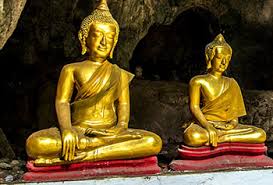
This tour includes the important places where Buddhism attained its heights. You will get a change to visit the places where Buddha was born, got education and enlightment. Buddhism believes in non-violence, was developed by Lord Buddha and followed in various parts of this World especially in South East Asian countries.International airfare, visa fees, driver / guide gratitude;
Any personal nature expense and any service not mentioned under "The Package Includes" head
On arrival at Indira Gandhi International airport, meet & greet by our representative & get transfer to the hotel for check-in. Overnight stay at the hotel.
New Delhi: The capital and the third largest city of India is a fusion of the ancient and the modern era. Standing along the west End of Gangetic Plain, the capital city, Delhi unwinds with culture, architecture and human diversity, deep in history, monuments, museums, galleries, gardens and exotic shows. Comprising of two contrasting yet harmonious parts, the Old Delhi and New Delhi, the city is a travel hub of Northern India.
Delhi is a palimpsest, bearing the complexities, the contradictions, the beauty and the dynamism of a city where the past coexists with the present. Many dynasties ruled from here and the city is rich in the architecture of its monuments. Diverse cultural elements absorbed into the daily life of the city, have enriched its character.
After breakfast proceed for full day city tour of old & New Delhi. You will make a visit to Red Fort, Jama Masjid, Raj Ghats, Lotus Temple, Laxmi Narayan temple, Qutub Minar, Himayun Tomb. Drive past President house, India Gate and Connaught place shopping center. Return to the hotel after sightseeing tour for overnight stay.
Breakfast will be at the hotel and you will be driven to Agra en-route visit Sikandra.
A beautifully maintained tree-lined monument at Sikandra marks the grave of the illustrious Akbar the Great. A great believer in harmony and equality of all religions, this visionary Mughal Emperor created Din-i Ilahi, a unique religion that combines the fundamentals of Islam, Hindusim, Buddhism and Christianity. His memorial imbibes architectural motifs of all the faiths that inspired him.
You will then be driven to Agra. Arrive and check-in to the hotel. After freshen-up leave to visit Taj Mahal and Agra fort.
Taj Mahal - "the epitome of love" and "a monument of immeasurable beauty". The beauty of this magnificent monument is such that it is beyond the scope of words. The thoughts that come into the mind while watching the Taj Mahal is not just its phenomenal beauty, but the immense love which was the reason behind its construction. Mughal Emperor Shah Jahan got this monument constructed in the memory of his beloved wife Mumtaz Mahal, with whom he fell in love at the first sight. The very first sight of the Taj Mahal, the epitome of love and romance leaves one mesmerized.
Agra Fort – a UNESCO World Heritage site and also known as Red Fort, founded by the famous Mughal emperor Akbar in 1565 AD, is predominantly of red sandstone. Ensconced within is the picture perfect Pearl Mosque, which is a major tourist attraction. It lies on the bend of the river Yamuna, almost in the heart of the town. Akbar built it as his citadel over the years 1563-73 in the finest architectural style. It has imposing gates and walls of red sandstone and a moat.
In the morning leave for Jaipur (06 hrs drive approx) en-route visit Fatehpur Sikri, 37 km west of Agra. Jalal-ud-din-Muhammad Akbar, Humanyun's son, accessed the throne at the tender age of 14 yrs. While hunting around Sikri, his curiosity was aroused by the songs of some minstrels about the celebrated Khwaja -Mu'inu'd-din Chisti, the founder of the Chisti order of SUFIS. Akbar, who was not having any child heard about Saint Salim Chisti and visited him in the year 1568. The saint blessed him with 3 sons and in gratitude Akbar ordered the great mosque of Fatehpur Sikri, built under his supervision. As a mark of respect to the saint, Akbar shifted his capital to Fatehpur Sikri and built various secular buildings like the Diwan-E-Aam, Diwan-E-Khas, Jodhabai palace, Birbal's house, Marian's house and the Panchmahal. On arrival at Jaipur check-in to hotel.
Evening to shop around the illuminated old markets of this lovely city. Overnight at hotel
Jaipur: The city that once had been the capital of the royalty, now serves as the capital city of Rajasthan. The very structure of Jaipur resembles the taste of the Rajputs and the Royal family. In the present date, Jaipur is the major business centre for the natives of Rajasthan with all requisites of a metropolitan city. The city of Jaipur, painted in pink, grasp the appreciation of every visitor. One can see that hoary charm still alive in the avenues of Jaipur. Jaipur is the reservoir of Indian customs, traditions, civilization and legacy.
After breakfast at hotel move out to visit Amber fort, usually pronounced as Amer Fort. In 1592, construction of the Fort was started by Raja Man Singh I. However, the Amber Fort took its present form during the reign of Raja Jai Singh I. An elephant will spare you the trouble of reaching up to the fortress. Once on top, stroll through the sprawling complex of courtyards and halls.
In the afternoon visit the city palace (A delightful blend of Mughal and traditional Rajasthani architecture), Hawa Mahal (Palace of Winds), Jantar Mantar (consisting of outsized astronomical instruments).
You will be dropped back to the hotel after sightseeing for overnight stay.
After breakfast you will be transferred to the airport to board on connecting flight for Varanasi via Delhi.
On arrival, meet by our representative who will transfer you to the hotel for check-in.
Varanasi: Hindus holiest city and one of the oldest living cities in the world. Varanasi was already old when Rome was founded, a flourishing trade centre when the Buddha came to Sarnath to preach his first sermon. It was a city of great wealth and religious important when the Chinese travelers Hiuen Tsang visited in the 7th century.
Overnight stay.
Early in this morning you will leave to visit Daswamedh Ghat and take a boat ride on the sacred river Ganges to see the cremation Ghats and witness the living traditions of one of the world's oldest and most important religions. For you to appreciate this remarkable city, we'll transfer you to the banks of the River Ganges before the sun rises. Board a boat with your guide and proceed to the middle of the river, where at sunrise the sight unfolds before you. Thousands of faithful come daily to the banks to bath and pray while in the background, temples and palaces rise in tiers from the water's edge.
Afternoon visit Sarnath, the buried Buddhist city where Lord Buddha gave his first sermon, Sarnath was a renowned school of learning from 6th century BC to 12th century AD. Visit the ruins, the stupa, the Buddhist temple and the Museum.
In the evening assemble in Ganga Aarti at the ghat. Overnight stay at the hotel.
Breakfast will be served at the hotel. Proceed to Bodhgaya.
Bodhgaya is sacred for Buddhists as well as Hindus.Here, under the famed Bodhi Tree, Prince Siddhartha attained supreme knowledge to become Buddha, the `Enlighted One'. This is the area where the Buddha lived most of his life and imparted his teachings. The name of the state, Bihar, is thus derived from the Sanskrit Vihara, meaning monastery. A few centuries after Buddha’s passing, the Maurya emperor Ashoka (234-198 BC) undertook the revival, consolidation and dissemination of Buddism. Ashoka’s monasteries and monuments dedicated to the teachings of the Buddha are intact to this day.
The magnificent Mahabodhi temple in Bodhgaya dates back to the Gupta era and records exist of scholarly visits from students, monks, pilgrims and philosophers alike from Sri Lanka, Myanmar and China between the 7th and 10th century AD. The temple also finds mention in the works of Chinese explorer Hiuen Tsang who visited in the 7th Century.
Overnight at Bodhgaya.
After breakfast proceed for the half-day tour of Bodh Gaya visiting the Mahabodhi temple complex, Satabodhi temple, Japanese and Tibetan monasteries along with Magadha University museum
Overnight stay.
In the morning you will leave for Patna via visit Nalanda and Rajgir.
Rajgir, the capital of 6th century Magadha Empire, was revered site of Buddha’s discourses. Buddha spent many years here. Visit Gridhrakula, Sapataparni cave, Ajatsatru fort and Venuvana.
Continue to drive (30 mnts approx) to visit Nalanda - the world's oldest university founded in the 5th century. Also visit monasteries and temples with impressive Buddhist & Hindu images. The Institute for research into Buddhism and Pali literature, which houses rare manuscripts, is also worth visiting for the enthusiasts.
On arrival at Patna, check-in to the hotel. Overnight stay.
After breakfast at hotel you will be driven to Kushinagar en-route visit Vaishali. On arrival at Kushinagar, check-in to the hotel. In the afternoon visit Mahaparinirvana temple and Ramabhar Stupa (cremation place of Lord Buddha). Overnigth stay.
This morning you will depart for Lumbini. Upon arrival check-in to the hotel.
Lumbini, the birthplace of Buddha, was found in 1890 after being untraced for 1,500 years. Three hundred years after the Mahaparinirvana, Emperor Ashoka visited Lumbini and erected a pillar there. This pillar, though broken, still remains at the site. It is known as the Rummendei Pillar after the earlier name of the place (modern name Rupandhei) in Nepal.
Afternoon visit Mayadevi temple, Ashoka Pillar and Stupas. Overnight stay.
Today you will be driven to Sravasti via visit Kapilvastu – the Birth place of Buddha.
91 kms from Lumbini is Kapilavastu, where Lord Buddha spent the formative years of his youth; where he saw suffering and pain, disease and death. Visit the main stupa complex, eastern stupa and the ruins of the palace.
Arriva Sravasti and check-in to the hotel. Sravasti, the capital of the ancient kingdom of Kosala, has the honour for sheltering Buddha for 24 rainy seasons in the Jetvana Gardens. The city, believed to be founded by the mythological king Sravast, has age-old stupas, majestic monasteries and several temples. Buddha is said to have performed some miracles here.
Rest of the day at leisure. Overnight stay.
After breakfast you will be driven to Lucknow.
Lucknow is an in-between land of the past and the present looking back constantly to the memories of a Nawabi past. The welding of various cultural strains nurtured by centuries of Mughal and later Delhi Sultanate rule, to the folk traditions of the Indo-Gangetic plains has produced a complex, yet rich synthesis. The Urdu language acquired its baffling phonetic nuances and suave perfection here. It was in Nawab Wajed Ali Shah's court that the most advanced of all classical Indian dance forms, the Kathak, took shape. The popular Parsi theatre originated from the Urdu theatre of this city. The tabla and the sitar were first heard on the streets of Lucknow.
Proceed for the sightseeing.
The Bara Imambara built by Asaf-ud-Daula for famine relief, is one of the largest in the world. There are excellent views of Lucknow from the top of the Imambara. An external stairway leads to an upper floor laid out as an amazing labyrinth known as the Bhulbulaiya. The dark passages stop abruptly at openings which drop straight to the courtyard below. It is said that the Nawab would, in lighter moments, play hide and seek with his wives in the maze.
The grand ornate 60-feet-high Rumi Darwaza gate was also built by Asaf-ud-Daula and serves as the entrance to the Bara Imambara.
Hussainabad or Chota Imambara was built by Mohammed Ali Shah in 1837 as his own mausoleum. The glittering brass-domes and ornate architecture of this building led a Russian Prince to call it the "Kremlin of India." Famous for its exquisite Belgian glass chandeliers, it contains the tombs of Ali Shah and his mother. A small bazaar, known as the Gelo Khana or "Decorated Place", lies inside the imposing entrance of the Imambara.
in 1881 by the British, the 67 m-high clock tower on the river Gomti is said to the tallest clock tower in India. The parts of the clock are built of pure gunmetal and the pendulum hangs 14 feet. The dial of this clock is shaped like a 12-petalled flower and is decorated with bells.
The Shah Najaf Imambara holds the tombs of Ghasi-ud-Din Haidar and his two wives. Situated on the south bank of Gomti towards the west of Sikandar Bagh, the building is almost an exact replica of the tomb of Hazrat Ali, the son-in-law of Prophet Muhammad, at Najaf Ashraf in Iraq. The interior is used to store chandeliers, and elaborate artifacts of wood, bamboo and silver paper which are paraded through the streets during the Muharram Festival.
Built in 1800 by Saadat Ali Khan for the British Resident, the Residency Building became the stage for the most dramatic events of the Siege of Lucknow during the 1857 mutiny. There are marks on the outer walls where cannonballs landed and a cemetery with graves of the dead. The Residency Museum is worth a visit.
The two Chattar Manzils on the banks of the Gomti were royal pavilions. The name comes from the gilted chattars or umbrellas atop the two main buildings. The Greater Chattar Manzil was once a king's palace. Under the existing river terrace was the ground floor with the tykhanas (cool underground rooms), cooled by the waters of the Gomti lapping against its outer walls. Today this building houses the Central Medicine Research body.
Overnight at Lucknow.
This day you will get transfer to airport to board on flight for Delhi. On arrival, you will connect to onward flight to home town.
Founded in 2003 in New Delhi, India, A G Tours Pvt. Ltd. is a travel management company, offering extensive tour packages for the Indian subcontinent. Recognized by the Ministry of Tourism, Read More...
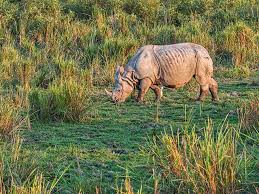 4D/3N
4D/3N
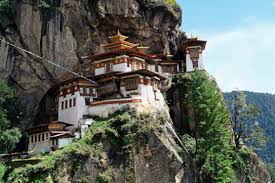 12D/11N
12D/11N
12 Days Highlights of Nepal and Bhutan T..
Kathmandu - Pokhara - Paro - Thimphu - Punakha
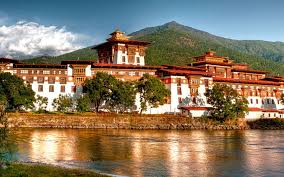 7D/6N
7D/6N
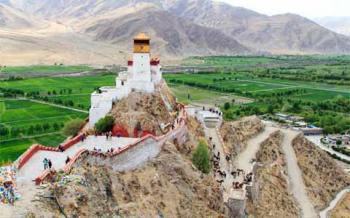 15D/14N
15D/14N
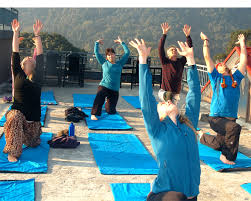 8D/7N
8D/7N
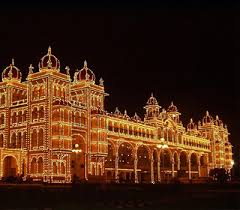 20D/19N
20D/19N
20 Days Grand South India Tour
Chennai - Mahabalipuram - Thanjavur - Trichy - Bangalore - Hassan - Pondicherry
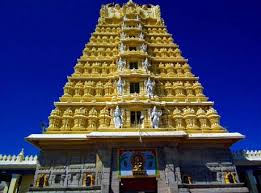 10D/9N
10D/9N
10 Days South India Pilgrimage Tour
Chennai - Tirupati - Kanchipuram - Mahabalipuram - Pondicherry - Trichy - Thanjavur..
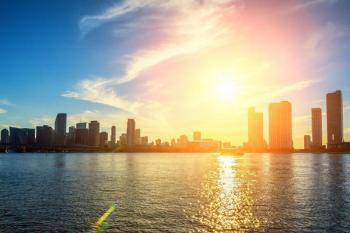 12D/11N
12D/11N
Munnar - Alleppey - Bangalore - Mysore - Ooty - Kovalam
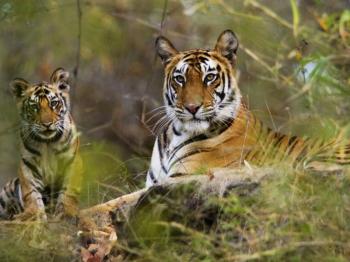 16D/15N
16D/15N
16 Days The Best of Indian Wildlife Tours
New Delhi - Jaipur - Ranthambore - Bharatpur - Fatehpur Sikri - Bandhavgarh - Mandla
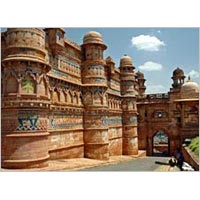 15D/14N
15D/14N
New Delhi - Agra - Gwalior - Bhopal - Indore - Mumbai - Tikamgarh - Chhatarpur - Au..
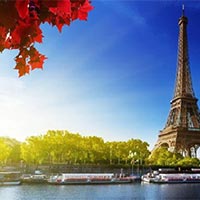 15D/14N
15D/14N
Rome - Pisa - Lucerne - Paris - Brussels - Amsterdam - London - Innsbruck - Vatican..
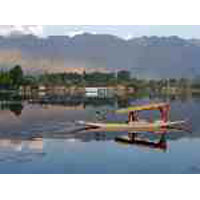 15D/14N
15D/14N
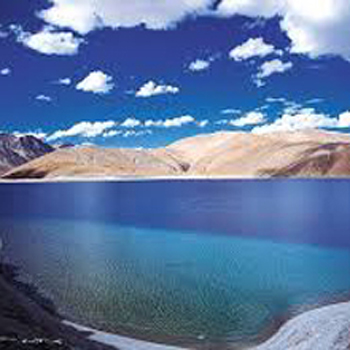 15D/14N
15D/14N
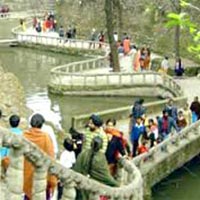 15D/14N
15D/14N
Chandigarh - Shimla - Manali - Dalhousie - Amritsar - Dharamshala
 15D/14N
15D/14N
New Delhi - Haridwar - Rishikesh - Shivpuri - Agra - Jaipur
 15D/14N
15D/14N
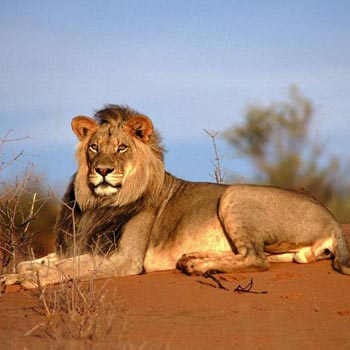 15D/14N
15D/14N
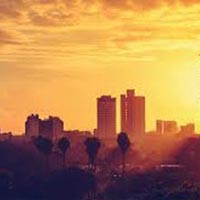 15D/14N
15D/14N
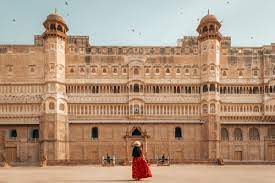 13D/12N
13D/12N
Rajasthan Tour Package 12 Night - 13 Days
Ajmer - Bikaner - Jaipur - Jaisalmer - Jodhpur - Mount Abu - Pushkar - Udaipur
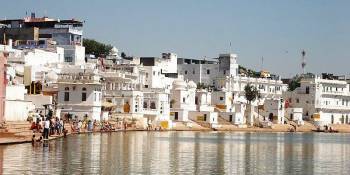 13D/12N
13D/12N
12 Nights Rajasthan Package From Jaipur
Ajmer - Bikaner - Jaipur - Jaisalmer - Jodhpur - Mount Abu - Pushkar - Udaipur
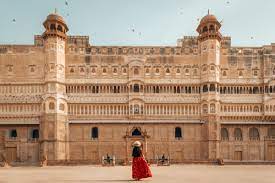 13D/12N
13D/12N
Rajasthan Tour Package 12 Night - 13 Days
Ajmer - Bikaner - Jaipur - Jaisalmer - Jodhpur - Mount Abu - Pushkar - Udaipur
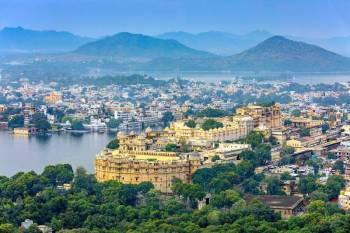 12D/11N
12D/11N
11 Nights 12 Days - Delhi Agra Rajasthan
New Delhi - Mathura - Agra - Jaipur - Ajmer - Pushkar - Udaipur - Mount Abu - Ranak..
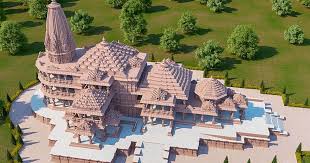 12D/11N
12D/11N
Prayagraj - Varanasi - Bodhgaya - Ayodhya - Pokhara - Chitwan - Parsa
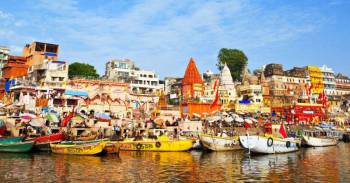 12D/11N
12D/11N
Uttar Pradesh Tour Package 11 Night - 12..
Varanasi - Bodhgaya - Puri - Kolkata - Ayodhya
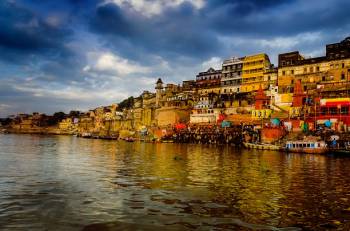 12D/11N
12D/11N
11 Nights - 12 Days Nepal Tour From Ayod..
Prayagraj - Varanasi - Bodhgaya - Ayodhya - Kathmandu - Pokhara - Lumbini - Chitwan..
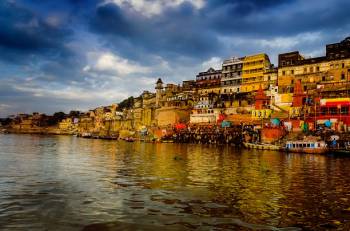 12D/11N
12D/11N
11 Nights - 12 Days Nepal Tour From Ayod..
Prayagraj - Varanasi - Bodhgaya - Ayodhya - Kathmandu - Pokhara - Lumbini - Chitwan..
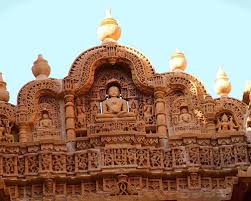 10D/9N
10D/9N
9 Night - 10 Days Rajasthan Tour Package
Ajmer - Jaipur - Jaisalmer - Jodhpur - Mount Abu - Udaipur